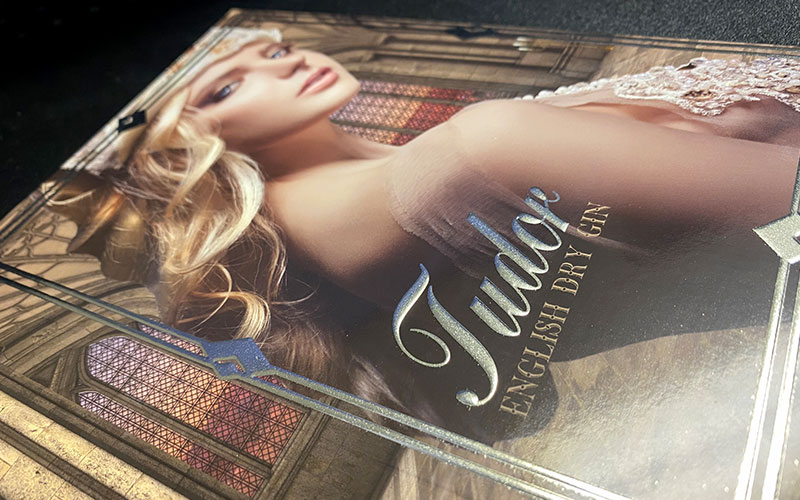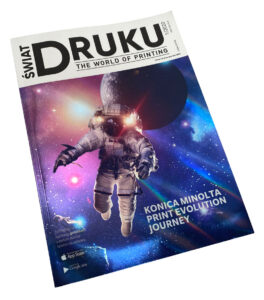
By Liz Stevens, writer, PostPress
The Foil & Specialty Effects Association (FSEA) recently hosted its virtual FSEA Online Learning Experience. As part of the programming, there was a presentation and panel discussion on cold foil. The panel included Tim Cain, president of Cast and Cure film and specialized equipment supplier Breit Technologies LLC; Mike King, president of cold foil equipment manufacturer Eagle Systems; and Stefan Congram, technical print expert for Cartamundi, a global manufacturer of playing cards, trading cards, board games and packaging. The panel discussion covered many topics, including the best applications and new markets for cold foil, as well as debunked myths surrounding the technique.
Over the last several years, the foils, adhesives and technology all have improved to help make cold foil a feasible option for many print decorating applications, replacing more expensive foil laminated board in many situations. Discussing where cold foil is most commonly used, Cartamundi’s Stefan Congram explained that his company uses cold foil for consumer products packaging, especially for the cards and games that are Cartamundi’s forte. “We see a lot of cold foil applications in the folding carton and rigid packaging industries,” said Congram. “We also see applications in direct mail and, obviously, in publications.” He noted that cold foil also is seen frequently for the collectibles, cosmetics, confectionary, pharmaceutical and nutraceutical industries.
Eagle Systems’ Mike King pointed to the cold foil work used for premium brands and deluxe products. “For high-end packaging – like Estee Lauder, Polo, Godiva – these are all brand owners that are out there with cold foil in the perfume business, chocolates, and wine and spirits,” said King. He also has seen a dramatic increase in certain market applications, partially attributed to the onset of the pandemic. “Now, with COVID-19, the wine and spirits market seems to have gone through the roof when it comes to foil,” he said. “And, believe it or not, even some of the cannabis markets are actually going after cold foil.”
Breit Technologies’ Tim Cain agreed with King’s comments concerning the opportunities in cannabis packaging. “The cannabis markets really have been a growth industry,” said Cain. “As we start to see more manufacturers with different products and different categories – whether it’s edibles or other cannabis products – we are seeing the same challenges that our consumer products companies see in their retail spaces. They are dealing with a highly educated consumer who is looking for product differentiation on the store shelf, so we are seeing quite a bit of interest in embellishment in that market.”
While the wine and spirits market has been using foil and specialty effects for a long time to add distinction and to differentiate its products, most high-end labels were using hot foil stamping, which was perceived to be of higher quality and add more sheen. Today, there are more labels being produced in a sheet-fed format with cold foil than ever before. Even uncoated stocks for high-end wine labels are incorporating cold foil successfully, according to King, which is somewhat new to the market.
Advantages and disadvantages of cold foil
Even though cold foil doesn’t replace conventional foil stamping or digital foil equipment, it provides significant advantages for certain applications, filling a special niche in the print embellishment industry. King, who has been involved with hot foil for 45 years, said that he is on both sides of the fence when it comes to hot vs. cold foil. “But I’ve learned over the years,” said King, “that with the cold foil, we will get a lot fewer defects in registration.” This is because cold foil is printed inline, and the registration from the first sheet carries over to the last sheet, he explained.
King went on to discuss the speed at which cold foil can be applied: “We’re able to run at high speeds all day long. We have machines running at regular speeds of 13,000 to 14,000 sheets an hour, and we have large-volume companies that are running closer to 16,000 and as high as 18,000 sheets per hour. Cold foil does not hold you back from speed.”
Cain agreed with King: “The ability to do cold foil inline with the printing also offers some speed advantages, especially when you are talking about these long-run markets, as we are starting to see a backfill taking place because of COVID-19. So, I think there are definitely some manufacturing benefits of doing cold foil above and beyond just some of the highly decorative aspects that people are going for.”
Another advantage of cold foil, especially when compared to foil laminated board, is that the operator does not have to cover “non-foil” areas with white opaque ink or do anything special on glue flaps for folding cartons. Cold foil allows users to knock-out the non-foiled areas on the sheet, making it a much easier process to overprint.

Congram said printing small black type on top of opaque white can be problematic. “When you are overprinting on top of opaque white ink, the black is going to end up gray,” he said. “It’s really, really tough to get a true black over an opaque white.”
Congram went on, describing aspects of cold foil that stand out. “The thing I like the best about cold foil is it allows for so much flexibility when you are trying to cost-engineer a project with a customer,” he said. “Cold foil is unmatched in flexibility for pricing. You can rotate cartons to get better foil utilization.” Congram went on to point out that webs of foil can be used where the foil needs to be located vs. a foil laminated board that has a full 40 inches of metallic. Another advantage that Congram sees with cold foil is its design potential, “as well as the fact that you can overprint on top of silver to make any color under the rainbow.”
In terms of productivity, Congram said, “There is no need for secondary stamping processes, so your throughput is going to be through the roof when compared to all of your other options. It’s certainly the fastest and the most productive way to put foil on a sheet.”
The equipment utilized for cold foil transfer also can be used, in most cases, to apply Cast and Cure – a technology that allows operators to add a clear holographic pattern over the printed sheet using a film that can be used several times over. “Having cold foil on offline equipment also gives you some other design capabilities,” stated Cain. “We have several customers in the finishing market that are using Cast and Cure as a secondary embellishment after the job has been printed. So, if a customer is making an investment into a two-color press to have cold foil capabilities, they could utilize that equipment to do other things besides just cold foil.”
Cain also commented on cold foil and Cast and Cure as they fit into the short-run and digital markets. “We are starting to see the embellishment side increase on the digital market,” he said. “Equipment from companies like Scodix and MGI is definitely starting to take the foil into the short-run market where, up until a few years ago, there weren’t any embellishment options available. And so, with the ability to look at adding cold foil capabilities without any of the tooling costs to enter it, we are definitely starting to see some expansions of cold foil in those markets, as well as with Cast and Cure.”
But Cain noted that cold foil and Cast and Cure cannot fill every embellishment requirement. “As an example, when we were doing the recent Gold Leaf Award judging, one of the products that showcased very well was the souvenir Super Bowl magazine cover,” he said. “The cover had multiple levels of holographics on it and multiple levels of transitions taking place, with print over the top of it, all in register.” A complicated, sophisticated item such as this magazine cover is at the upper echelon of embellishment. “The ability to create truly customizable holographic images, where cost is of no concern, where there are multiple tiers either from a security standpoint or from an embellishment standpoint, shows that there always is going to be a need for those markets. I don’t think Cast and Cure or cold foil will ever be able to overtake those markets.”
In other examples, cold foil usually is not the best choice to apply a metallic finish if the foiled area on the carton or other printed product is relatively small. And, if the image or images include embossing, cold foil may not be the best choice. Hot foil stamping, in many instances, is the better choice for these types of applications.
Debunking the myths
Because of some of the initial challenges created by cold foil transfer, there still are myths and overblown concerns about the process. King shared a handful of misconceptions that have proven untrue. “One of the myths was that roll changes took a long time – took an hour – which wasn’t true even way back when. We have tested it out to see what we can do, and we can get it down to a five-minute roll change – or even less if we have to, depending on how we do it.”
King said that an additional misconception was that cold foil only worked on certain substrates. “Today, we work on literally every substrate,” he said. “It’s also a myth that cold foil cannot be embossed, because my business cards have been embossed for years and it’s all cold foil. They have one bit of hot foil on them and that was done flat-stamping.”
Congram described his cold foil myth experiences. “I think the biggest one that I hear most commonly is that cold foil is not as shiny as other processes,” he said, “but clearly with the advancement in technology and materials, it’s right up there today, in my opinion.”
Congram noted that shine can be a relative quality and offered a helpful tip: “People have to remember that if you are going to put shiny foil on a gloss sheet, you are not really doing yourself any favors on the contrast side. This isn’t a design conversation, but I like to always include these little tidbits – I like to put a matte wherever my cold foil is not, to really bring it to the front.”
As these industry veterans have attested, cold foil – a technique no longer shrouded in mystique and myth – can be a fast, manageable and highly effective option for adding stand-out embellishments. It’s an effective way to provide a metallic look to a variety of printed material.
For more in-depth information on this subject and to hear more from Mike King, Stefan Congram and Tim Cain on this topic, listen to the entire webinar presentation, “The Impact of Cold Foil on the Embellishment Landscape” – as well as other videos – by visiting the FSEA Online Learning Experience’s YouTube playlist.

